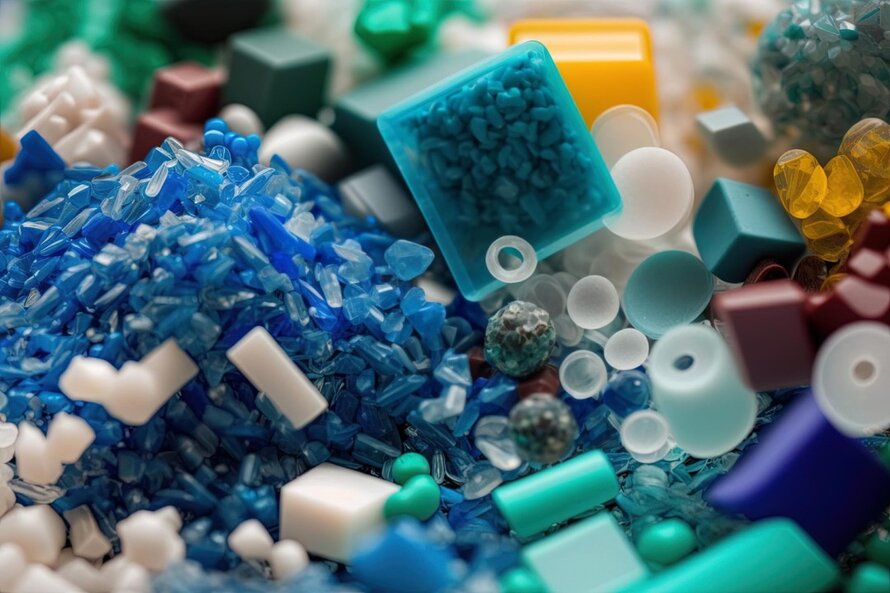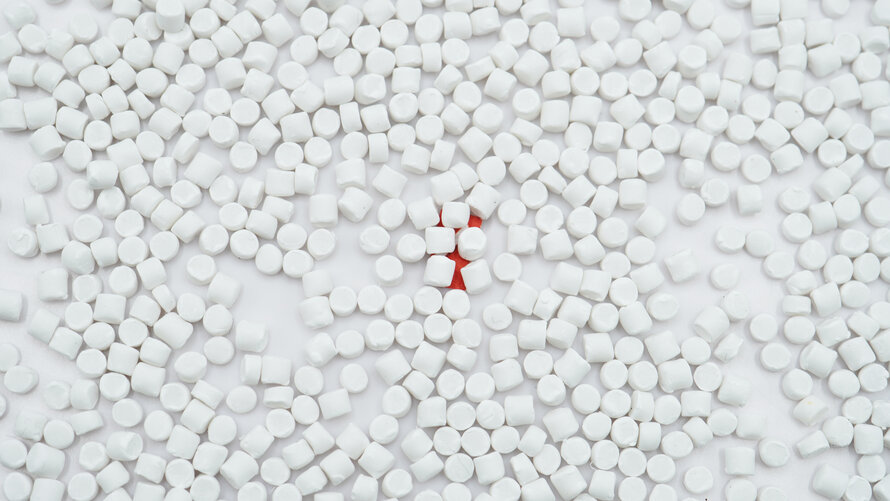In today's world, hygiene and safety are top concerns, so antibacterial plastic has emerged as a product with outstanding performance. These specialized materials solve many difficult problems for different industries, from healthcare to consumer goods. Understanding the essentials of antibacterial plastics is important to grasp their importance and potential applications.
1. What are antimicrobial materials?
Antimicrobial materials are the type of synthetic additives, also known as polymeric biocide, that hinder the growth of microorganisms such as bacteria, fungi, algae, and even certain microscopic animals like dust mites.
When harmful bacteria or other tiny organisms come into contact with the surface of an antimicrobial polymer, the antimicrobial agents within the material are triggered, stopping the microbes from growing and reproducing. This continuous release of antimicrobial agents ensures that the polymer surface remains clean and protected throughout the product's entire lifespan.
Some common antimicrobial agents used in plastics include:
- Silver ions: These inorganic compounds release silver ions when exposed to moisture, which penetrates the microbes and prevents them from surviving, multiplying, or spreading.
- Zinc pyrithione: This antimicrobial agent, based on zinc, works to inhibit the growth of bacteria, mold, and mildew on plastic surfaces.
- Isothiazolinones: These organic compounds are effective against a wide range of microorganisms, including bacteria and fungi, helping to maintain the cleanliness and hygiene of plastic surfaces.
Antibacterial plastic is one of the most popular types of antibacterial materials, which is designed to continuously prevent the growth of microbes throughout the product's lifespan. They contain additives that fight against bacteria, viruses, and other microorganisms.
These antibacterial properties aim to offer ongoing protection against microbial growth as long as the plastic remains in good condition and is used as intended. Factors such as the type of plastic, manufacturing process, and exposure to environmental elements can affect the effectiveness of these additives over time.
Generally, properly made antimicrobial plastics should maintain their germ-fighting abilities for many years, providing protection for the entire useful life of the product. Following the manufacturer's instructions for use and care will ensure the best results.
Read more: Factors affecting the lifespan of plastic
2. The properties of antimicrobial plastic

Antibacterial plastic has many outstanding properties
Antimicrobial plastics stand out from their conventional counterparts due to a unique set of characteristics. These qualities make them highly sought-after in various sectors where cleanliness and safety are paramount.
Key features of antimicrobial plastics:
- Microbial resistance: The primary and most crucial aspect of antimicrobial polymers is their ability to act as a barrier against a wide range of microbes, including bacteria, fungi, and viruses, thereby preventing their spread.
- Long-lasting protection: Unlike topical antimicrobial coatings that may degrade over time, antimicrobial plastics offer continuous protection throughout their lifespan, ensuring sustained cleanliness.
- Non-toxic: Many antibacterial compounds used in these plastics, such as silver ions, are safe for human contact. This makes them suitable for applications like food packaging and medical equipment.
- Durability: Antimicrobial plastics are robust and resilient, withstanding wear and tear, making them suitable for applications requiring frequent cleaning or handling.
- Versatility: With their wide range of applications spanning industries like healthcare, food processing, and consumer products, antimicrobial plastics prove to be versatile solutions.
- Enhanced hygiene: By reducing the risk of contamination and infection, antimicrobial plastics contribute to improved hygiene standards, particularly in healthcare settings.
- Odor control: Some antimicrobial plastics incorporate compounds like lactic acid, providing additional odor-control properties. This feature makes them ideal for products like sports equipment, footwear, and textiles.
- Customizability: Manufacturers can adjust the antimicrobial properties of plastics to suit specific requirements, offering customization options for various applications.
3. Applications of antimicrobial plastic in real life
Antimicrobial plastics find wide-ranging applications across various industries due to their versatility. Let's delve into some practical uses of these polymers to showcase their adaptability:
- Healthcare: Antimicrobial plastic materials are invaluable in the medical field. They contribute to maintaining cleanliness and preventing infections in healthcare facilities by being utilized in the production of medical tools, equipment, and even antimicrobial clothing.
- Food packaging: Ensuring food safety is extremely important and antibacterial plastic plays a huge role in achieving this goal. They are incorporated into food packaging materials to extend the shelf life of products by preventing bacteria and mold, reducing the risk of contamination.
- Consumer products: Everyday items will have increased value from the use of antibacterial plastic. From cutting boards, baskets, and other kitchen utensils to bathroom fixtures, this material is integrated to promote hygiene and minimize the growth of germs and bacteria.
- Automotive industry: Antibacterial plastics are used in vehicle interior components to create a cleaner and more hygienic environment for users, contributing to improved overall comfort and safety.
- Electronic devices: Surfaces of electronic devices, such as smartphones, tablets, and laptops, can harbor harmful germs. Antimicrobial plastics are incorporated into device casings to mitigate microbial growth, making these gadgets safer to handle and use.
4. Conclusion
In conclusion, it is impossible not to mention the importance of antibacterial plastic in improving hygiene and safety. With its wide-ranging applications and proven effectiveness against microbial growth, this material continues to be increasingly used in a variety of fields. As we strive to create a cleaner and safer environment, antibacterial plastics serve as an even more indispensable ally.
5. About EuroPlas - The world’s largest filler masterbatch manufacturer

Filler masterbatch is produced by EuroPlas
EuroPlas is one of the 5 largest manufacturers and suppliers of plastic masterbatch and filler masterbatch globally with product quality meeting European standards. EuroPlas has a reputation of over 14 years and a presence in more than 80 countries worldwide.
Our company currently holds the title of the world's leading filler masterbatch manufacturer. Moreover, we also offer a diverse range of products including color masterbatches, plastic additives, engineering plastic compounds, bio fillers, etc. Especially, as the leading provider of filler masterbatch globally, EuroPlas takes pride in offering customized plastic material solutions to empower customers to boost their competitive edge. For further information regarding our wide array of our products, feel free to contact us without delay!